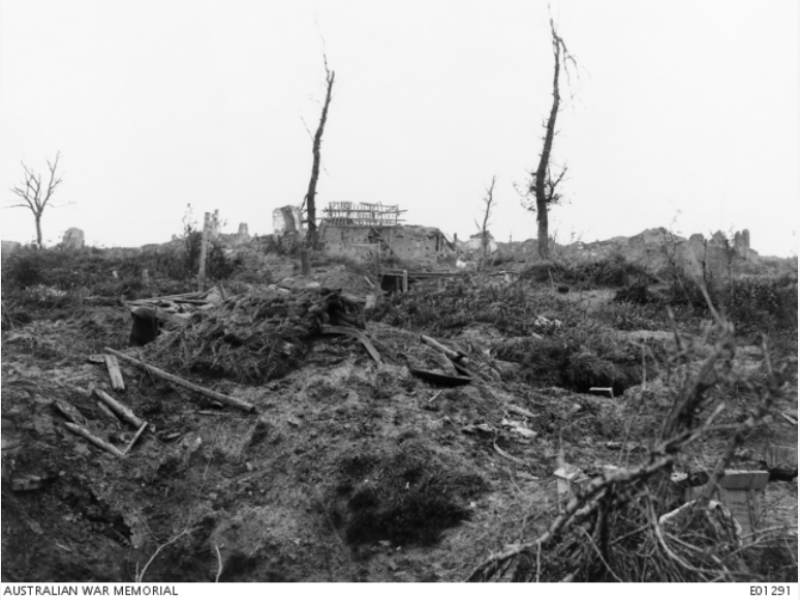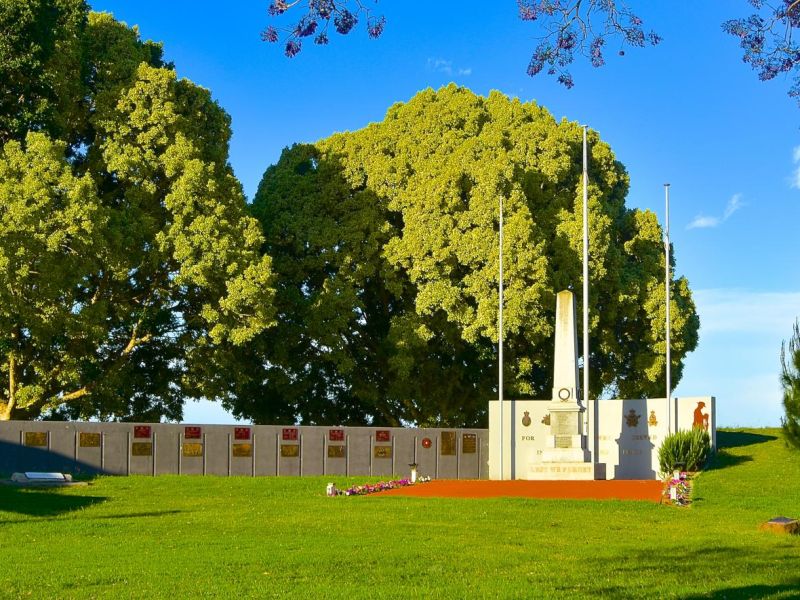Private Vincent Henry Walsh, 41st Battalion, AIF
Vincent Walsh was born in 1887 to Michael and Mary Walsh of South Grafton in northern New South Wales. He attended the local convent school, and in the years before the First World War he worked as a labourer.
In June, Walsh travelled to nearby Lismore and enlisted in the Australian Imperial Force. After a period of training at Bell’s Paddock Camp at Enoggera, near Brisbane, he embarked for England with a reinforcement group of the 41st Battalion.
As part of the 3rd Division, the 41st Battalion spent several months training on the Salisbury Plains in Wiltshire. The battalion was made up of some the most highly trained troops of the AIF.
Walsh embarked for France in April 1917 and met the battalion in the relatively quiet Houplines sector, several kilometres north of the town of Armentières. This area – known to the troops as “the nursery” – was unsuited for major offensive action, so the 3rd Division spent most of the time in the area raiding, patrolling, and acclimatising to conditions on the Western Front.
Around this time, Walsh would have learned about the death of his younger brother, William, who had died of pneumonia while serving with the 9th Battalion.
In June 1917, the 3rd Division formed part of the Australian assault on the German positions at nearby Messines. During this successful operation, the 41st Battalion played a supporting role in consolidating ground gained from the German army.
Immediately after Messines, Walsh was temporarily loaned to the 11th Machine Gun Company, which played a crucial role in providing fire support for the 3rd Division infantry. They were also laying down harassing and interdiction fire behind German lines with the unit’s battery of Vickers heavy machine-guns.
While the Australians had taken and held a significant portion of German territory at Messines, the Germans routinely shelled their positions with high-explosive ammunition and shrapnel.
On 30 June 1917, Walsh was seriously wounded in the legs by a shrapnel shell. He was evacuated to the 2nd Australian Casualty Clearance Station at Trois Arbres, just over the border in France, but succumbed to his wounds the following day.
He was buried at the nearby cemetery. Walsh was 30 years old.
Aaron Pegram, Historian, Military History Section
Image: View of the ruins of Messines, in Belgium. The foreground is littered with debris, 1917.

 Australian War Memorial
Australian War Memorial